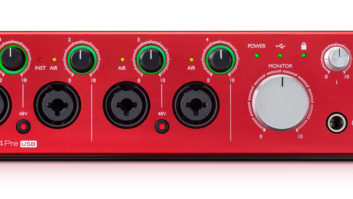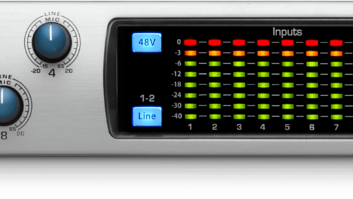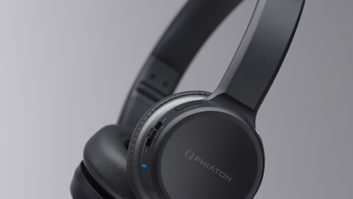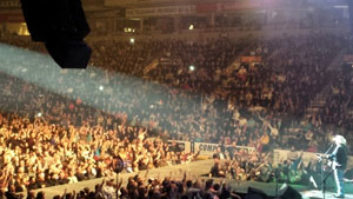The best thing about software-based effects systems is that they’re, well…software-based. By updating software via a new disk, data cart or the occasional download, existing customers can add fresh sounds or new features and keep their equipment up to date without major hardware modifications. Lexicon first implemented the software-based strategy back in the days of the first 224, and the tradition was well-established by 1986 when the 480L arrived; 15 years later, Lexicon still offers updates for its former flagship reverb.
At last year’s AES show in Paris, Lexicon unveiled its new champion, the 960L. An impressive performer, both in terms of its powerful, new surround-capable algorithms, the 960L offers an advanced LARC2™ remote and a 24-bit, 8-in/8-out architecture that supports stereo and surround production at up to 96 kHz for broadcast, film, audio post and music applications.
In January of 2001, barely a year after the product was first shown, Lexicon released Version 2 software, which offers support for an additional reverb card (effectively doubling the system’s DSP horsepower), along with mappable I/O and 16 I/O support. Additional features include Machine Global Mix and Global I/O control, dual LARC2 support, 4×4 configurations, cascading operations and enhanced input metering — all from a free upgrade CD.
A month ago, Lexicon released V. 2.5 software — another free update distributed on CD — with 100 new factory programs boasting seven newly developed stereo and multichannel delay algorithms. The new software also includes new 96kHz reverbs, surround plate and chamber sounds, and a selection of interesting, useful multichannel and stereo delays — seven banks of new effects in all.
At the 2001 AES show in New York City, Lexicon will unveil Version 3 software — perhaps the most ambitious 960L upgrade to date. Whereas previous updates for the unit focused on routings, hardware support functionality and new sounds, Version 3 significantly ups the ante on the 960L’s automation capability, while adding the power of LOGIC7 surround processing.
Developed by Lexicon, LOGIC7 is a sophisticated DSP encode (and consumer playback) system that provides improved multichannel reproduction from matrix-encoded and 2-channel stereo recordings. Beyond the left/right front channels and matrixed center channel, LOGIC7 can offer full bandwidth, stereo rear channels from either surround-encoded or 2-channel sources, as opposed to the mono-only surround derived from Dolby Pro Logic processing on surround-encoded sources. As its “LOGIC7” name implies, the playback process can expand both 5.1 and 2-channel soundtracks for 7.1 and virtual 7.1 channel playback. Pros will appreciate LOGIC7’s ability to easily upmix a 2-channel master to 5.1 channels and to downmix a surround master to encoded stereo for playback on any stereo or surround system. This surround-to-stereo-to-surround process is commonly referred to as 5:2:5 or 5:2:7, and offers a useful tool for surround production.
Since Lexicon first unveiled the 960L, with the touch-sensitive moving faders and joystick on its snazzy LARC2 controller, people have wondered why these controllers only exist for editing parameters. In fact, the 960L’s automation capability was limited to receiving MIDI program change messages — hardly impressive from the company that developed pioneering products such as the PCM 70, which offered Dynamic MIDI™ real-time control of effects parameters back in 1985. However, this all changes with the Version 3 software release; the 960L now offers full-blown automation control of all effects parameters, including panning within the surround programs, and the moving faders track moves in real time. The joystick does not move, but any moves are tracked by the cursor within the panning window on the 960L’s large display.
Currently, no offline automation data editing is available, but to make automation changes, one merely makes another pass, enters Update mode, redoes the move and simply picks up at the “out” point with the motorized faders, precisely repeating earlier moves. As with all 960L presets and user data, automation moves — defined as SMPTE timecode events, translated via the unit’s MIDI Time Code (MTC) input — are stored directly to the 960’s internal hard drive as session data and can be archived to floppy disk for long-term storage or moving to other systems.
Version 3 software for the Lexicon 960L debuts at AES; initial deliveries are expected to begin Q/1 of 2002.
Lexicon, 3 Oak Park, Bedford, MA 01730; 781/280-0300; fax 781/280-0490; www.lexicon.com.




